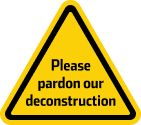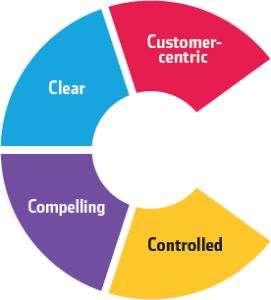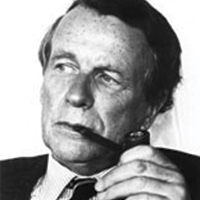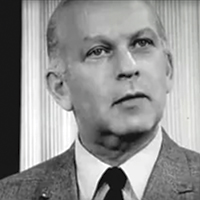On message strategy and more.
On message strategy and more.
The definition of message strategy: Not as obvious as you might think.
Is your marketing team or sales force wrestling with message strategy? It helps to have a common understanding of what message strategy actually is.
Since we’re the self-proclaimed Message Strategy Experts®, we got you on this.
To properly define message strategy, we need to break it down — one word at a time.

“Message”: It’s not exactly the same as “communication.”
First, the word “message.” You don’t need a dictionary definition from me. But I’m gonna give you one anyway. According to merriam-webster.com, a message is “a communication in writing, in speech, or by signals.” What I like about this one is how “signals” is inclusive of nonverbal communication.
But think about the difference between “communication” and “message.” Although we use these terms interchangeably, they connote different things. Communication suggests a process. Message, on the other hand, implies meaning. Meaning that is sent — and meaning that is received — through the process of communication.
Let’s say I’m on the receiving end of your message. If I “get it,” where am I getting it from? I’m getting it from what you say and how you say it. I’m deriving meaning from both your substance and your style.
(Like form and function, there’s a classic duality here. In the ad business, people debate whether to “sell the steak” or “sell the sizzle.” Or they preach an order: “Say it square, then say it with flair.”)
| What you say (verbal) | How you say it (paraverbal) |
|---|---|
| Substance | Style |
| Matter | Manner |
| Content | Concept |
| Function | Form |
| Steak | Sizzle |
| Square | Flair |
So, your message exists in what you say, and how you say it. Put a pin in that.
Next word.
“Strategy”: It’s not what most people say it is.
To the consternation of writers everywhere, “strategy” is a word that people throw about loosely. Makes us sound smart, right? But we basically use it as a synonym for “plan.” Dictionaries acknowledge this. (Even my trusty dusty 1992 American Heritage Dictionary. Sigh.) At best, this lessens the weight the word “strategy” should carry. At worst, it’s flat wrong.
The best definition I’ve heard — and the one that flipped the switch for me — is this one from Michael D. Watkins of Harvard Business Review: “A business strategy is a set of guiding principles that… provides a clear roadmap [for] the actions people in the business should take… and the things they should prioritize… to achieve desired goals.”
Let me shorten that for ya: A strategy is a set of guiding principles. Bam. So a strategy is not a plan. It’s what drives the plan.
Not so sure? Think of The Art of War by Sun Tzu. It’s often called the world’s greatest book on military strategy. If you’ve read it (and you should), you know that it’s not a book of tactical plans; it’s a book of guiding principles. For example: “Appear weak when you are strong, and strong when you are weak.” That’s a principle. It doesn’t tell you exactly how to do it, because how depends on your situation. How is what your plan is for.
Now let’s put these ideas together. A message comes from what you say and how you say it. A strategy is a set of guiding principles. And why do you need a strategy? Because you have a goal. Every goal needs a strategy to achieve it.
So (drumroll please) “message strategy” is a principled approach to what you say and how you say it — in order to achieve a goal.
(Yes, my Strunk & White friends, I know the words “in order” are not necessary. But they just feel right.)
Message strategy has four principles.
What, pray tell, is this principled approach? It’s a discipline that follows four ideals of influence.
(I might’ve called these “principles of persuasion.” But my man Robert Cialdini already commandeered that phrase. His book, Influence: The Psychology of Persuasion, is an absolute must-read.)
To be successful, your message should be:
These are the 4Cs of effective communication — the principles of message strategy. Put more simply, “the four things that make a message work.”
Learn more about these principles at the links above.

To have a strategic message, you apply these four principles (strategy) to what you say and how you say it (message). This is what makes a message effective.
Message strategy vs. media strategy vs. marketing strategy.
What’s the difference between message strategy and marketing strategy? And what’s the difference between message strategy and media strategy? Maybe it’s obvious, but here’s a simple way to think about it — using my favorite: single-syllable words.
You already know that message strategy is rooted in what you say and how you say it.
Marketing strategy is your purpose — the reason you’re creating a message in the first place. It’s why you say it.
Media strategy is about placement and timing — so your message gets seen and heard. It’s where you say it and when you say it.
What is more important? What you say? Or how you say it?
You wouldn’t deny that “what you say” matters. And you probably wouldn’t deny that “how you say it” matters. But when it comes to achieving your goal, does one matter more than the other?
Opinions vary.
Famous ad guy David Ogilvy once declared, “What you say in advertising is more important than how you say it.”

Credit source: Wikipedia
Another famous ad guy, Bill Bernbach, while not actually disagreeing with David, had a different view:

Credit source: liveaboutdotcom
So you’ve got the content camp, and the concept camp. Who’s right?
Both are. What you say and how you say it are both vehicles to get your message across. So don’t dismiss either. Keep your attention balanced.

An exercise for applying message strategy: Try this at home.
Try this — the next time you’re brainstorming about your sales enablement approach, brand, positioning, value proposition, content marketing, or tagline. On your whiteboard or screenshare, make two columns: “what to say” and “how to say it.” (Such simple terms can really help re-focus a confused or frustrated team.) Whatever you put under those headings, test with the four principles. Ask “Is this customer-centric? Is it clear? Compelling? Controlled?”
(Send us a message if you’d like to have a facilitator or referee.)
Consider also using this exercise as a way to analyze what your competitors are doing. It should prove enlightening.
Does a strong message strategy really help you create effective communications? We say yes, based on the results we’ve seen (especially in achieving adoption of sales enablement initiatives).
Does this approach work for every industry? Absolutely. And some industries may benefit more than others. Distribution, for example.
Got a comment? By all means, send us a message.





